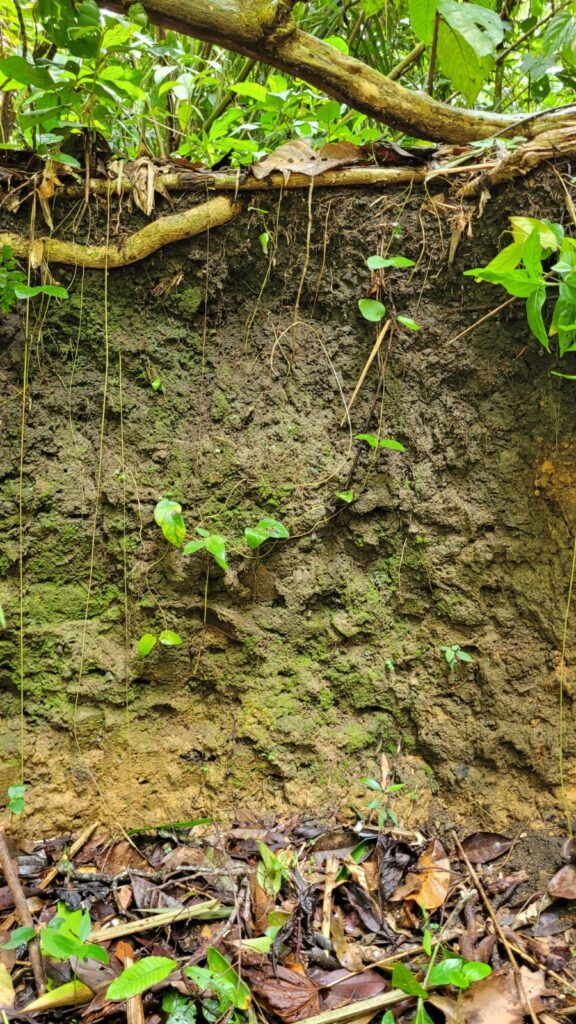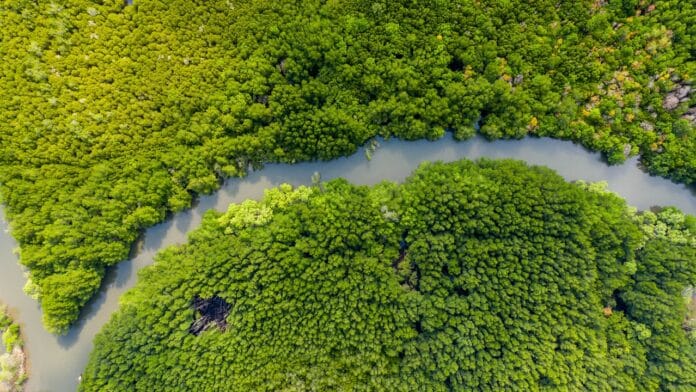Deforestation of areas for agriculture and cattle breeding is the leading cause of ecological degradation and loss of biodiversity. Techniques that increase soil health and microbiological quality are required to mitigate these impacts. Amazonian Dark Earths (ADE) can help trees grow for use in ecological restoration operations.
Millions of Amerindians living in today’s Amazonia transformed the initially poor soil through various processes between 450 BCE and 950 CE.
Soils were enhanced with charcoal from low-intensity fires used for cooking and burning trash, animal bones, broken pottery, compost, and manure over many human generations.
As a result, Amazonian dark earth (ADE) or terra preta was created, which is highly beneficial due to its high amounts of nutrients and stable organic matter formed from charcoal, which gives it its black color.
Brazilian scientists have demonstrated that ADE could be a secret weapon to accelerate reforestation in the Amazon, where 18% or around 780,000 km2 has been lost since the 1970s but globally.
Joint lead author Luís Felipe Zagatto, a graduate student at the Center for Nuclear Energy in Agriculture of São Paulo University, Brazil, said, “Here we show that the use of ADEs can enhance the growth of pasture and trees due to their high levels of nutrients, as well as to the presence of beneficial bacteria and archaea in the soil microbial community.”
He added, “This means that knowledge of the ‘ingredients’ that make ADEs so very fertile could be applied to help speed up ecological restoration projects.”
They conducted controlled studies to simulate the biological succession and soil changes that occur when pasture in deforested areas is actively converted to forest. Their goal was to investigate if ADEs, or eventually soils in which the microbiome has been artificially built to imitate them, may speed up this process.
Zagatto and colleagues collected ADE from the Caldeiro Experimental Research Station in the Brazilian state of Amazonas and agricultural soil from the Luiz de Queiróz Superior School of Agriculture in So Paulo as controls. They packed 36 four-liter pots with 3kg of ground inside a greenhouse with a mean temperature of 34oC to predict global warming beyond present Amazonian temperatures of 22 to 28oC.
One-third of the pots received only control soil, another third received a 4:1 blend of control soil and ADE, and the remaining third received 100% ADE.
They put seeds of palisade grass (Urochloa brizantha), a typical fodder for animals in Brazil, in each container to imitate pasture and allowed the seedlings to develop for 60 days.
The researchers cut the grass and left only its roots in the soil before replanting tree seeds in each of the three soils. Ambay pump wood (Cecropia pachystachya), Peltophorum dubium (typical of secondary forests), or cedro blanco (Cedrela fossils)
The seeds were allowed to germinate and grow for 90 days before measuring the height, dry mass, and root extension. Over the course of the experiment, the scientists measured changes in the soil’s pH, texture, and concentrations of organic matter, potassium, calcium, magnesium, aluminum, sulphur, boron, copper, iron, and zinc. They also tracked changes in soil microbial diversity.
Initially, ADEs had more nutrients than control soil, with 30 times more phosphorus and three to five times more of each other tested nutrient, except manganese. The pH of ADE was likewise higher, and it contained more sand and silt but less clay.
Soils had lower nutrients after the experiment, but 100% ADE soils remained richer in these than control soils, while nutrient levels in 20% ADE soils were intermediate. Throughout the trial, 20% or 100% ADE soils supported more bacterium and archaea biodiversity than control soils.
Joint lead author Anderson Santos de Freitas said, “Microbes transform chemical soil particles into nutrients that plants can take up. Our data showed that ADE contains microorganisms that are better at this transformation of soils, thus providing more resources for plant development.”

He also said, “For example, ADE soils contained more beneficial taxa of the bacterial families Paenibacillaceae, Planococcaceae, Micromonosporaceae, and Hyphomicroblaceae.”
According to a new study conducted by Anderson Santos de Freitas and Dr. Siu Mui Tsai, adding adenosine diphosphate (ADE) to soil boosted plant growth and development. Compared to the control soil, the dry mass of palisade grass rose 3.4 times in 20% ADE and 8.1 times in 100% ADE.
Cedro blanco and P. dubium seedlings grew 2.1 and 5.2 times taller in 20% ADE, respectively, and 3.2 and 6.3 times taller in 100% ADE. Ambay pump wood did not grow in control or 20% ADE soils but thrived in 100% ADE soils. The researchers found that ADE can increase plant development. However, they cautioned that if utilized in nature, it would take an equal amount of time to recover.
Senior author Dr. Siu Mui Tsai, a professor at the same institute, cautioned: “ADE has taken thousands of years to accumulate and would take an equal time to regenerate in nature if used. Our recommendations aren’t to utilize ADE itself, but rather to copy its characteristics, particularly its microorganisms, for use in future ecological restoration projects.”
Journal Reference:
- Freitas, A. S., Zagatto,etal. Amazonian dark earth enhances the establishment of tree species in forest ecological restoration. Frontiers in Soil Science. DOI: 10.3389/fsoil.2023.1161627
